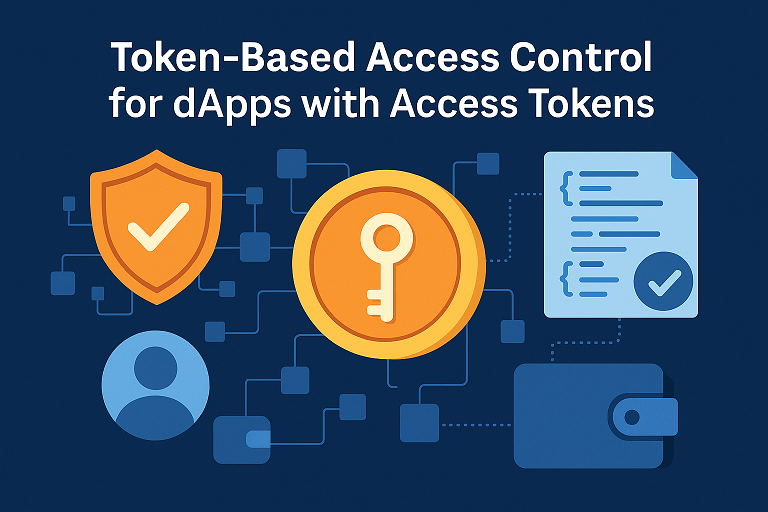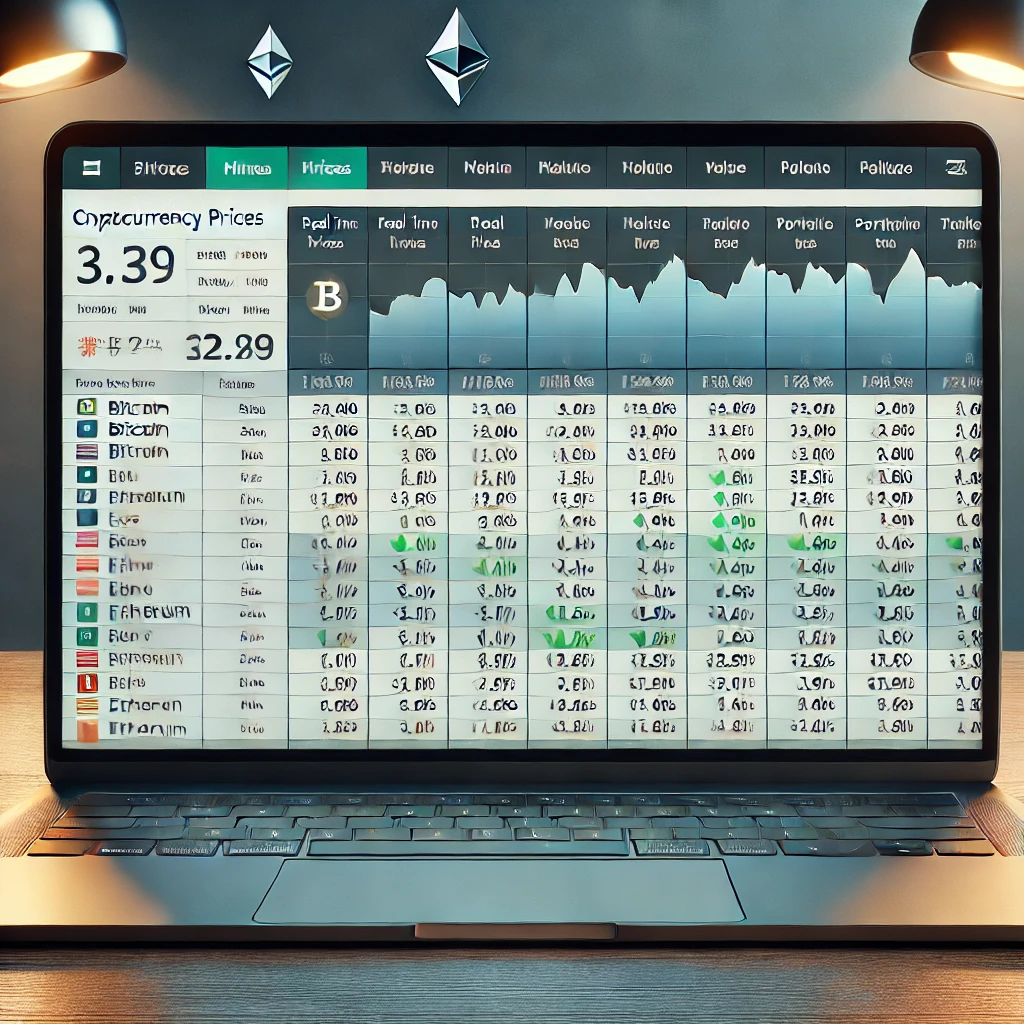Introduction of Access Tokens
With the increasing adoption and sophistication of decentralized applications (dApps), establishing secure and scalable systems for managing user access tokens has become a critical priority. In contrast to traditional web applications that rely on centralized authentication servers, dApps demand decentralized, trustless mechanisms that can protect resources without compromising user autonomy. One of the most promising approaches to meet this challenge is token-based access control, particularly through the use of access tokens.
This article explores the concept, architecture, and implementation strategies of token-based access control systems in dApps. We’ll delve into why access tokens are essential for decentralized ecosystems and how they enhance security, scalability, and usability.
Why Decentralized Applications Need Access Tokens
Decentralized applications operate without centralized servers. Instead, they utilize blockchain networks and smart contracts to handle data and logic. While this architecture enhances transparency and trust, it also presents unique security and identity management challenges.
In traditional apps, authentication and session management are managed by backend systems that issue cookies or session tokens after a user logs in. In dApps, there’s no central backend; everything must be trustless, meaning users must prove their identity and authorization via mechanisms that don’t require centralized validation.
Access tokens act as cryptographic credentials that enable decentralized verification of a user’s identity and associated permissions.
Access Tokens vs Traditional Authentication Methods
In legacy systems, access control typically involves:
- User authentication via username/password
- Server-issued session tokens stored in cookies
- Centralized session management
These mechanisms are tightly coupled with centralized services. They don’t align well with the ethos of dApps, which emphasize decentralization, privacy, and self-sovereignty.
By contrast, token-based access control in dApps supports:
- Stateless authentication
- Permission delegation
- Offline verification of user rights
- Better integration with blockchain-based identity solutions (e.g., Ethereum addresses, ENS, DIDs)
Access tokens can be cryptographically signed, stored on-chain or off-chain, and validated by smart contracts without any external server.
Types of Access Tokens Used in Web3
1. JWT (JSON Web Token)
A widely used format for token-based authentication, JWTs are compact, URL-safe, and can carry custom claims. In Web3 contexts, JWTs can be signed by decentralized identity providers and used across dApps for authorization.
2. Capability Tokens
These tokens embody the concept of „capabilities“ — the rights to perform certain actions on resources. Instead of validating identity, they focus on validating the holder’s authority to perform specific operations.
3. NFT-Based Tokens
Non-fungible tokens (NFTs) can act as verifiable proof of access, uniquely tying ownership to permission to enter a service, space, or system.
4. ERC-20 Tokens with Access Rights
Some protocols associate access control with token balances. Holding a certain number of ERC-20 tokens might allow a user to access specific smart contract functions or dApp features.
The Role of Smart Contracts in Validating Access Tokens
Smart contracts act as the decentralized enforcement layer in dApps, handling the logic required to confirm whether a user is authorized based on token data.
- Signature Verification: Smart contracts can verify whether a token is signed by a trusted issuer.
- Claim Validation: Contracts can check if the token includes valid claims (e.g., permissions, expiration time).
- Revocation: While trickier in a decentralized context, revocation lists or expiration timestamps help invalidate compromised tokens.
- Token Ownership: Some dApps validate token ownership directly through on-chain checks (e.g.,
balanceOf()for ERC-20 or NFT tokens).
This approach ensures that access control enforcement is trustless and transparent.
How dApps Issue and Manage Access Tokens
In a decentralized context, issuing tokens involves several design choices. Here’s a high-level overview:
1. Identity Establishment
Users typically sign a message using their blockchain wallet (e.g., MetaMask, WalletConnect). This signature serves as cryptographic proof of control over the private key, establishing user identity without requiring personal information.
2. Token Generation
A backend (or decentralized identity service) creates a token that encodes the user’s permissions. The token is signed using a private key known to the authority (can be a DAO, a protocol owner, or even a multisig wallet).
3. Token Storage
Tokens can be stored client-side (e.g., localStorage) or in decentralized storage like IPFS or Ceramic Network. Some systems write token references or hashes on-chain to provide auditability and immutability.
4. Token Usage
Users present tokens when interacting with a smart contract. The contract validates the token, checks the claims, and allows or denies access accordingly.
Benefits of Token-Based Access Control for dApps
Decentralization-Friendly
Applications can retain full decentralization while efficiently enforcing user permissions using token-based authorization mechanisms.
Fine-Grained Permissions
Tokens can specify precise rights—such as granting view-only access to a specific document or authorizing a vote in a DAO proposal—tailored to individual use cases.
Interoperability
Tokens are portable. A user can use the same token across multiple dApps or services, creating a Web3-native single sign-on (SSO) experience.
Improved User Experience
After receiving a token, users can continue accessing authorized resources across different services or sessions until the token naturally expires or is invalidated.
Real-World Use Cases of Access Tokens in dApps
DAO Membership and Governance of Access Tokens
DAOs often use token-gated access mechanisms to ensure only eligible members can vote or participate in governance discussions. Access tokens serve as proof of membership.
Paywalled Content and Subscriptions of Access Tokens
Content platforms like Mirror.xyz use NFTs or signed tokens to control access to premium content. Creators can issue limited-time or single-use tokens to grant exclusive access.
Web3 Gaming
Games often require tokens for in-game actions, character customization, or participation in tournaments. These tokens act as verifiable permission slips.
Identity Verification
Protocols like BrightID or Proof of Humanity can issue access tokens post-verification. These can be used across dApps to restrict services to verified users only.
Designing Secure Access Tokens for Web3
Use Time-Limited Tokens
To reduce abuse, tokens should have expiration times. This ensures that access is not granted indefinitely.
Sign Tokens with Secure Keys
Use secure signing mechanisms (e.g., ECDSA) and store private keys in secure enclaves or multisig wallets.
Avoid On-Chain Secrets
Never store sensitive data in plaintext on-chain. If tokens include sensitive claims, store only hashed versions or store data off-chain with references.
Monitor for Abuse
Implement analytics or alerting systems to detect unusual usage patterns, such as token replay attacks or excessive access attempts.
Access Token Standards and Projects in Web3
Several emerging standards and frameworks are helping formalize how access tokens are used in decentralized systems:
- EIP-4361 („Sign-In with Ethereum“): Defines a standardized way for users to authenticate by signing structured messages with their Ethereum wallets.
- W3C Verifiable Credentials: Aims to provide a secure, privacy-respecting method for credential issuance and presentation.
- UCAN (User Controlled Authorization Network): Focuses on delegation-based access control, where users grant access through signed capabilities.
- Lit Protocol: Enables dynamic access control by enforcing blockchain-based conditions tied to token ownership and user identity.
These efforts are building the foundation for a more cohesive, interoperable access layer for Web3.
Challenges and Limitations of Access Tokens
Revocation Complexity of Access Tokens
In a decentralized setting, revoking tokens can be difficult, especially if the validation is entirely on-chain. Setting expiration times or block height limits provides limited protection against misuse.
Sybil Attacks
If token issuance is based on wallet addresses, malicious actors may create multiple wallets to gain access. This is why some systems use identity verification protocols before issuing tokens.
Privacy vs Transparency
Blockchains are public by default. Storing access data on-chain can raise privacy concerns. Hybrid models (on-chain references + off-chain storage) are often used to balance this tradeoff.
Future of Access Tokens in Web3
As the Web3 ecosystem continues to mature, access tokens are expected to evolve into more advanced and versatile tools. The convergence of decentralized identity (DID), verifiable credentials, and smart contract-based authorization is paving the way for:
- Web3-native identity passports
- Decentralized SSO across dApps
- Access tokens linked to real-world credentials
- Time-locked or context-aware permissions
Interoperability will be a major theme. Imagine a user earning a credential in one protocol (e.g., completing a DeFi course) and using it across others (e.g., applying for a job in a Web3 company).
Conclusion of Access Tokens
Token-based access control represents a paradigm shift in how permissions are managed in the decentralized world. By leveraging access tokens, developers can implement secure, modular, and scalable permission systems that align with the decentralized ethos of Web3.
This architecture allows dApps to manage permissions autonomously, while offering users seamless, interoperable access experiences. As standards mature and adoption grows, access tokens will play a foundational role in shaping secure, user-centric decentralized ecosystems.




















